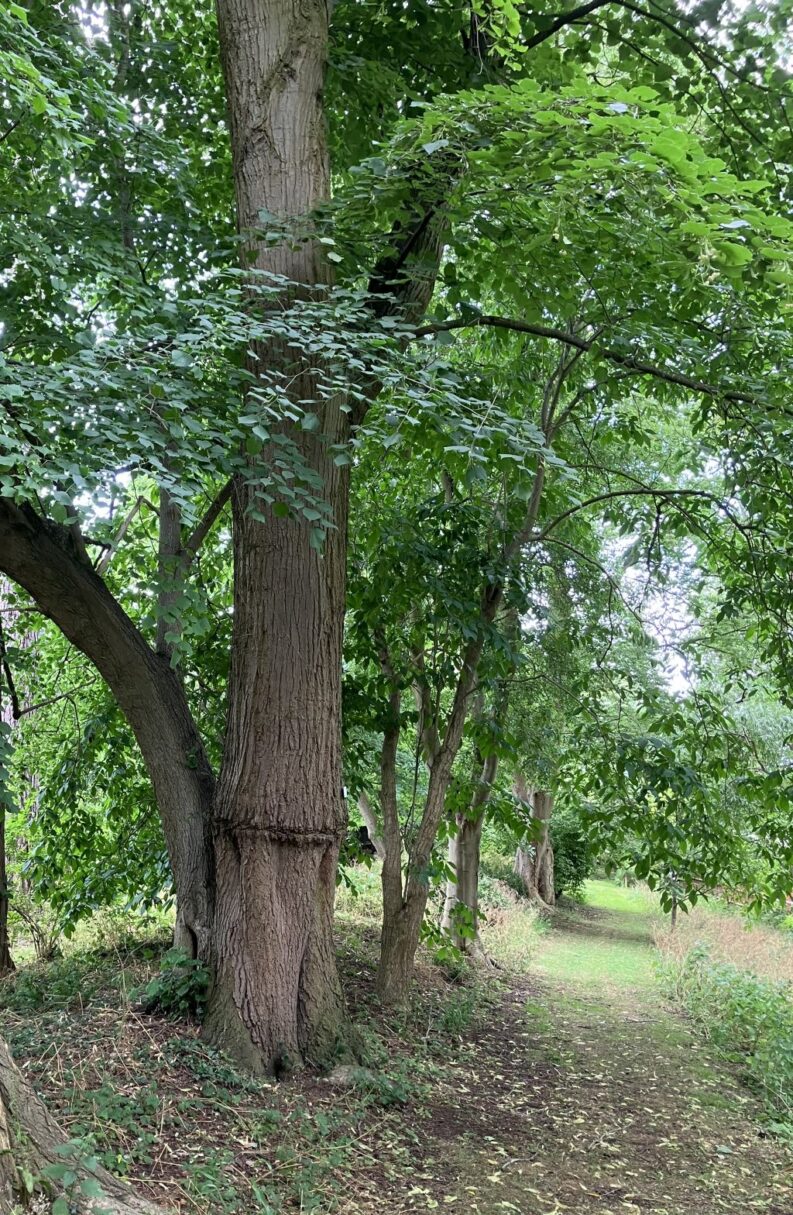#72 WEEPING SILVER LIME
Tilia tomentosa ‘Petiolaris’

This tree can be found half way along the Grass Path, on the south side.
County Champion
| Distribution: | Origin is uncertain. Usually sterile, but may be a hybrid with another Tilia species that are native to south eastern Europe and south western Asia, from Romania and the Balkans east to western Turkey, occurring at moderate altitudes. |
| Planting Date: | 1915 |
| Bought from: | Veitch Nurseries, Exeter, Devon, |
| Appearance: | A deciduous tree growing to 35 m. |
| Bark: | Smooth |
| Leaf: | Cultivar ‘Petiolaris’ (pendent or weeping silver lime) differs from the common lime in longer leaf petioles 4 cm to 8 cm long and drooping leaves. ‘Lime Green’ when young and mostly hairless above, densely white tomentose with white hairs below, and with a coarsely toothed margin. |
| Flowers: | The flowers are pale yellow, hermaphrodite, produced in cymes of three to ten in mid to late summer with a pale green subtending leafy bract; they have a strong scent and are pollinated by bees. |
| Fruit: | The fruit is a dry nut-like drupe 8 mm to 10 mm long, downy, and slightly ribbed. |
| Tree height and girth in 2023 | Height 25 m and girth 257 cm |
| Uses: | Ornamental tree tolerant of urban conditions Fragrant in spring, drops buds and pollen during the spring and autumn. Wood is soft and light, white-yellow and finely textured. It is easy to work and often used in wood turning, carving and furniture making. Lime bark was traditionally used to make rope. Lime flowers are a valuable source of food for honeybees. |
| Introduction Date: | Early 1840s |
| Anecdotes and Comments: | Substantial Common Lime branch growing from below graft. Rated in 2023 County champion by height by The Tree Register Known as ‘Silver Linden’ in U.S. |